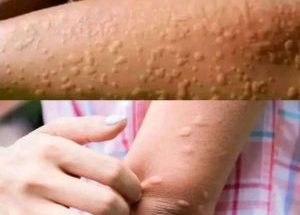Why You Should Never Kill a House Centipede Again
For many people, the sight of a house centipede scurrying across the floor is enough to send chills down their spine. With their long legs, lightning-fast movements, and eerie appearance, house centipedes often get an unfair reputation as creepy pests. However, what many people don’t realize is that these creatures are actually beneficial allies in our homes. If you’ve ever instinctively squashed one of these little arthropods, you may want to think twice before doing it again. Here’s why you should never kill a house centipede.
Natural Pest Control Experts
House centipedes are nature’s own pest control squad. Unlike other unwanted insects that invade homes, centipedes are not destructive or disease-carrying. Instead, they actively hunt and consume many of the actual pests that can cause real problems in your household. Their diet includes:
- Cockroaches
- Termites
- Spiders
- Silverfish
- Ants
- Bedbugs
These pests can damage your property, contaminate food, or even pose health risks. House centipedes keep their populations under control naturally, reducing the need for harmful chemical pesticides.
Non-Destructive and Harmless to Humans
Despite their fearsome appearance, house centipedes are harmless to humans. Unlike termites or rodents, they don’t chew through wood, wiring, or food supplies. They don’t spread diseases like cockroaches or mosquitoes. In fact, house centipedes prefer to stay out of sight and avoid human interaction as much as possible.
While centipedes do possess venom to subdue their prey, their bites are extremely rare and generally harmless to humans. The worst-case scenario for a person might be a mild, bee-sting-like reaction if bitten, but even this is uncommon since house centipedes are not aggressive toward humans.
A Sign of a Bigger Pest Problem
If you frequently see house centipedes in your home, it may indicate that you have a larger pest issue. Since centipedes rely on other insects for food, their presence suggests that your home might already be harboring other pests such as cockroaches or silverfish. Instead of eliminating centipedes, it’s a good idea to investigate what might be attracting them. Taking measures to reduce moisture, seal cracks, and maintain cleanliness can help control both centipedes and their prey.
Eco-Friendly Pest Control
Using pesticides and insect sprays can introduce harmful chemicals into your home, posing risks to children, pets, and the environment. House centipedes provide a completely natural alternative by controlling pest populations without the need for toxic substances. If allowed to thrive, they can significantly reduce the presence of harmful insects without disrupting the balance of your home’s ecosystem.
How to Coexist with House Centipedes
If you’re still uneasy about having house centipedes around, there are ways to coexist peacefully without resorting to killing them:
- Minimize their food sources – Keep your home clean and dry to prevent other pests from attracting centipedes.
- Reduce moisture – Centipedes thrive in damp environments, so use dehumidifiers and fix leaks to make your home less inviting.
- Seal entry points – Close cracks and gaps in walls, windows, and doors to prevent insects from entering in the first place.
- Gently relocate – If you truly can’t stand the sight of them, use a glass and a piece of paper to catch and release them outside rather than squishing them.
Final Thoughts
House centipedes may look intimidating, but they are far from being the villains of your home. Instead, they serve as effective pest controllers, eliminating more harmful intruders without the need for chemicals or costly extermination services. The next time you spot one darting across your wall, resist the urge to kill it. Instead, appreciate it for the helpful hunter that it is, and let it continue its work in keeping your home pest-free.



